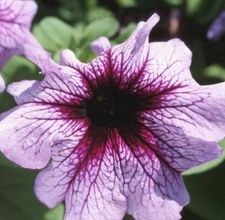Petunias are reliable annuals that bloom from spring until autumn with only minimal maintenance. While petunias tend to be pest-resistant, the plants are occasionally bothered by various insect pests. Weak or neglected petunias are, however, especially prone to insect invasions. To keep petunias healthy, begin by providing adequate water and plenty of bright sunshine.
Slugs
-
Slugs are primary pests of petunias and other garden plants, chewing large holes in the leaves during the night and early morning. During the day, slugs hide under plant debris and in other dark, damp areas. It isn’t difficult to know when slugs have been on your plants, as you can see the slimy residue on the leaves and the silvery trails on the ground. Slugs can be picked off by hand or controlled by application of natural or chemical slug baits.
Spider Mites
-
Colonies of spider mites are difficult to see, but the discolored, distorted leaves and the tiny webs are evidence that the mites are present on your petunias. Eventually, the leaves turn yellow and drop off the plant. Spider mites are especially problematic during warm, dry weather in summer and early autumn. Keeping petunias well watered is the best way to prevent spider mites. Pesticides or insecticidal soaps may be needed if infestations are severe.
Thrips
-
Thrips are tiny flying insects that survive by punching holes in the leaves, enabling the pests to suck the juice from the cells. You may not see the thrips, but you can recognize the damage by the discolored and damaged foliage. Biological control and use of the thrips’ natural enemies is an effective form of control. Light infestations are sometimes controlled by removing the infested foliage, or by dislodging the pests with a strong stream of water.
Tobacco Budworm Caterpillar
-
Tobacco budworm caterpillars chew the foliage of petunia plants, quickly destroying flowers and leaves of young plants and seedlings. Although you may never see the caterpillar, proof that it has feasted on petunias includes not only the chewed leaves, but small, black, seedlike droppings the caterpillar leaves behind. Tobacco budworm is sometimes controlled by use of bacterial insecticides such as Bifenthrin or Bacillus thuringiensis.


Deprecated: strpos(): Passing null to parameter #1 ($haystack) of type string is deprecated in /home/agriviek8Qv/agriviet.net/public_html/wp-includes/comment-template.php on line 2522